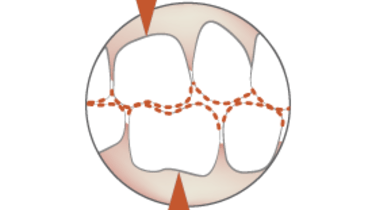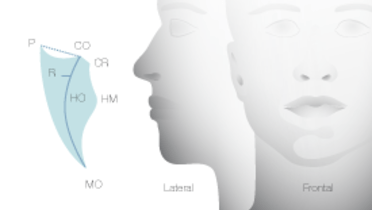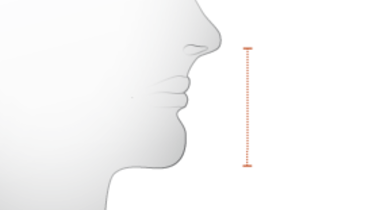-
0
Patient Assessment
- 0.1 Patient demand
- 0.2 Overarching considerations
- 0.3 Local history
- 0.4 Anatomical location
- 0.5 General patient history
-
0.6
Risk assessment & special high risk categories
- 5.1 Risk assessment & special high risk categories
- 5.2 age
- 5.3 Compliance
- 5.4 Smoking
- 5.5 Drug abuse
- 5.6 Recreational drugs and alcohol abuse
- 5.7 Parafunctions
- 5.8 Diabetes
- 5.9 Osteoporosis
- 5.10 Coagulation disorders and anticoagulant therapy
- 5.11 Steroids
- 5.12 Bisphosphonates
- 5.13 BRONJ / ARONJ
- 5.14 Radiotherapy
- 5.15 Risk factors
-
1
Diagnostics
-
1.1
Clinical Assessment
- 0.1 Lip line
- 0.2 Mouth opening
- 0.3 Vertical dimension
- 0.4 Maxillo-mandibular relationship
- 0.5 TMD
- 0.6 Existing prosthesis
- 0.7 Muco-gingival junction
- 0.8 Hyposalivation and Xerostomia
- 1.2 Clinical findings
-
1.3
Clinical diagnostic assessments
- 2.1 Microbiology
- 2.2 Salivary output
-
1.4
Diagnostic imaging
- 3.1 Imaging overview
- 3.2 Intraoral radiographs
- 3.3 Panoramic
- 3.4 CBCT
- 3.5 CT
- 1.5 Diagnostic prosthodontic guides
-
1.1
Clinical Assessment
-
2
Treatment Options
- 2.1 Mucosally-supported
-
2.2
Implant-retained/supported, general
- 1.1 Prosthodontic options overview
- 1.2 Number of implants maxilla and mandible
- 1.3 Time to function
- 1.4 Submerged or non-submerged
- 1.5 Soft tissue management
- 1.6 Hard tissue management, mandible
- 1.7 Hard tissue management, maxilla
- 1.8 Need for grafting
- 1.9 Healed vs fresh extraction socket
- 1.10 Digital treatment planning protocols
- 2.3 Implant prosthetics - removable
-
2.4
Implant prosthetics - fixed
- 2.5 Comprehensive treatment concepts
-
3
Treatment Procedures
-
3.1
Surgical
-
3.2
Removable prosthetics
-
3.3
Fixed prosthetics
-
3.1
Surgical
- 4 Aftercare
Existing prosthesis
Key points
- Examination of existing dentures provides invaluable information on patients’ perceptions of teeth, soft tissue esthetics and facial vertical dimension support
- Modifying old dentures enables the patient to assess how a previous denture experience can be optimized with or without implant therapy
- Implant therapy offers additional treatment options for both adaptive and maladaptive edentulous patients
Existing dentures - important information
Examination of existing dentures provides invaluable information on patients’ perceptions of teeth and soft tissue esthetics, including facial vertical dimension support. It also informs clinicians regarding their patients’ overall denture wearing experience, whether it was an adaptive or an unadaptive one.
Adaptive patients
A prosthetically adaptive denture offers important guidance to a planned optimization of a new prosthodontic intervention with or without implant therapy. The guidance includes arch form, occlusal plane orientation, relationship of the anterior teeth to the lips, denture base extensions, flange thickness and contours and prosthetic teeth wear patterns.
An evaluation of the existing denture`s esthetic merits - specifically teeth arrangement, size and color - can also be completed by studying any available previous dentures and old photographs.
A preliminary clinical esthetic outcome can be imagined from improved circum-oral, cheek and vertical facial support achieved by employing soft peripheral waxes on flanges, provisional tissue conditioner, relines, trial teeth arrangements and use of tooth-colored auto-polymerizing resins to improve occlusal schemes. Provisional modifications in old dentures enable the patient to assess how a previous adaptive denture experience can be enriched with a new prosthodontic prescription with or without implant therapy.
The existing dentures can also be used during implant-based therapy to fabricate drill guides.
Maladaptive patients
Maladaptive denture patients also require this protocol to address some aspects of their denture wearing experience. However, their chronic inability to wear dentures results from a complex etiological mix of morphological, physiological and psychological determinants; and the preliminary protocol will only partially alleviate their concerns. Typical signs and symptoms found in these patients include:
- Severe morphological compromise of the denture-supporting areas that significantly undermines denture retention
- Poor oral muscular coordination
- Low tolerance of the supporting mucosal tissues
- Parafunctional habits leading to recurrent soreness and instability of the prosthesis
- Unrealistic functional prosthodontic expectations
- Active or hyperactive gag reflex elicited by a removable prosthesis
- Psychological inability to wear a denture, even if adequate denture retention or stability are present
Brånemark’s osseointegration principle enriched treatment options for both types of patients:
- a fixed implant supported prosthesis
- an implant-supported overdenture with its convenient, economic implications and enhanced scope for esthetic soft tissue support






